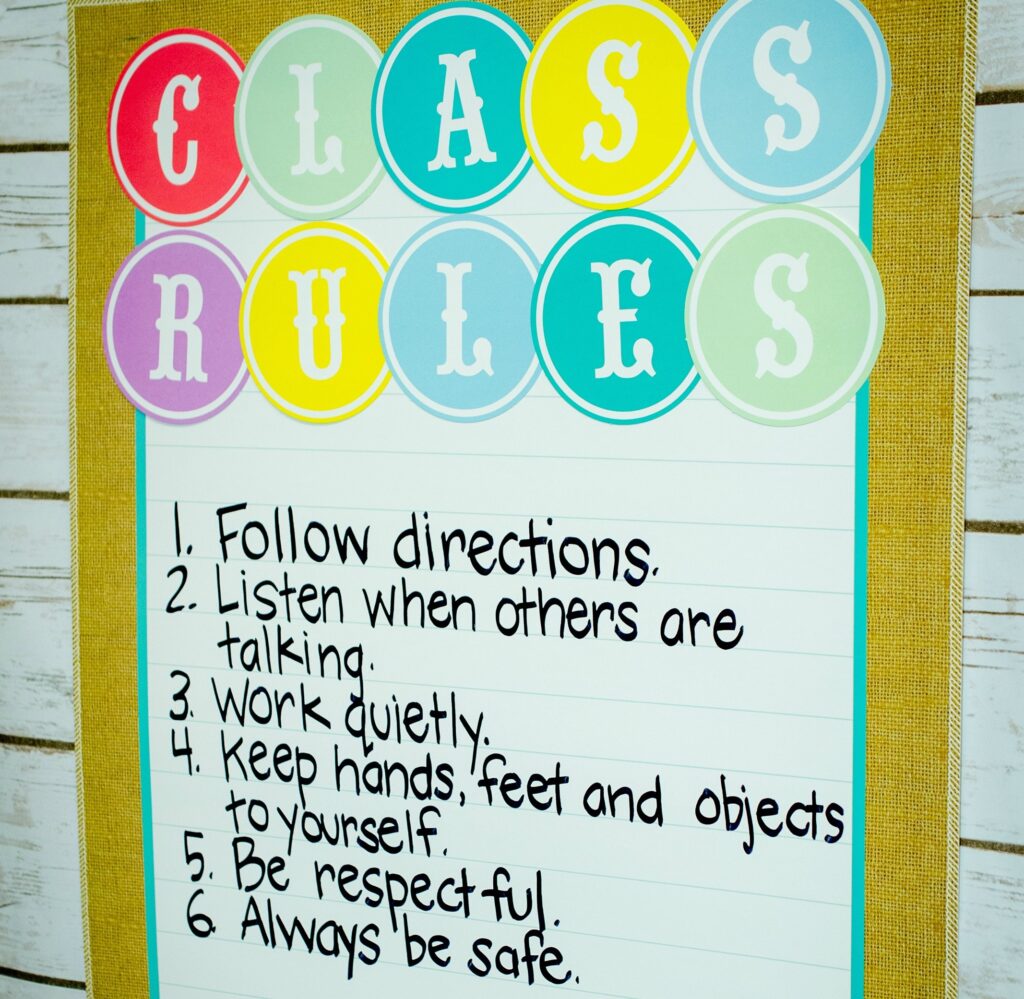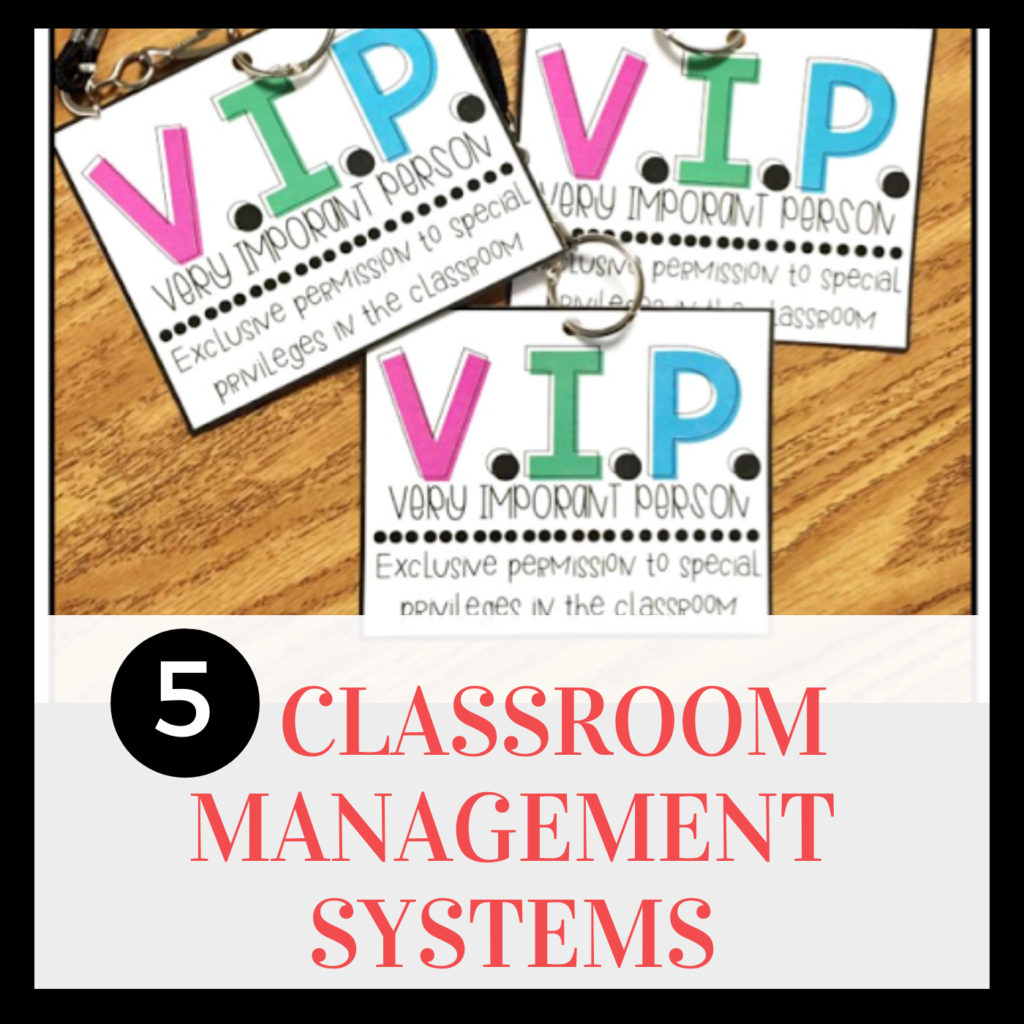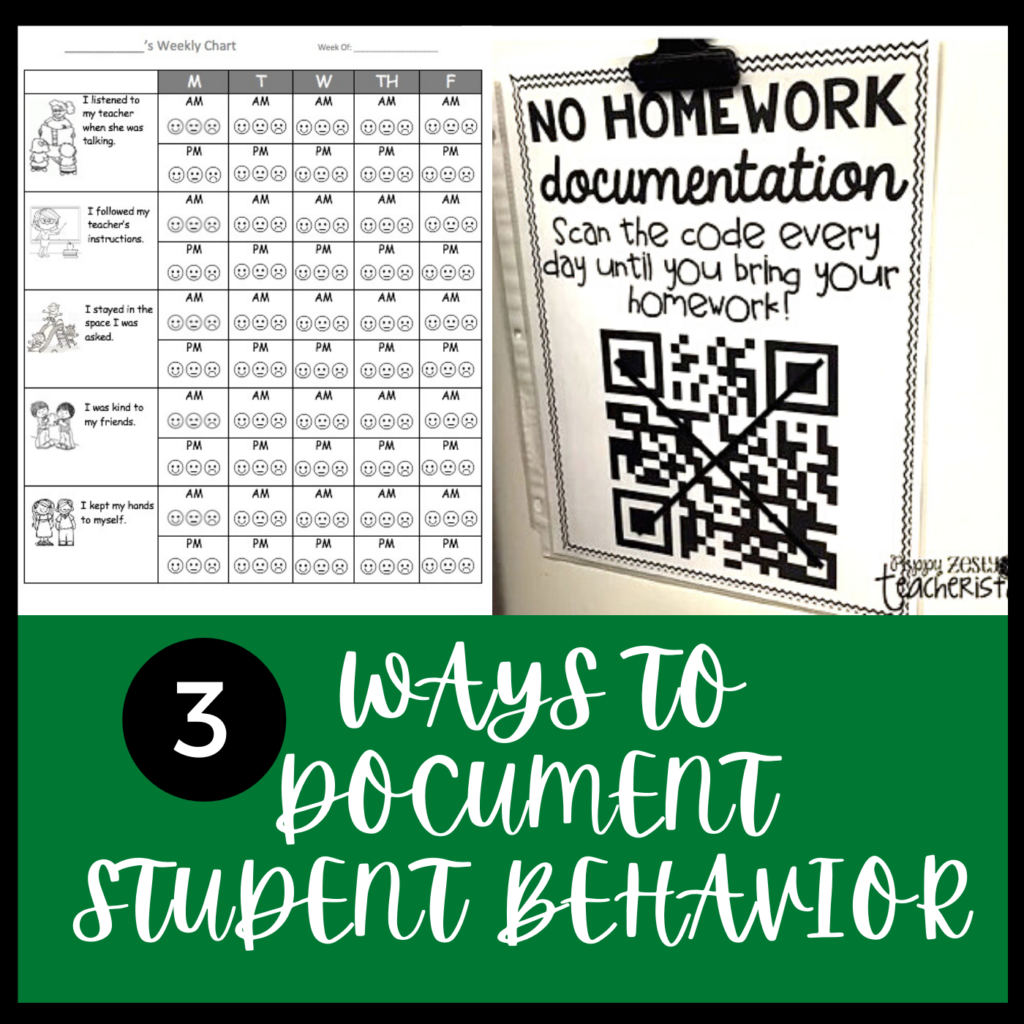When asking teachers what their number one challenge in the classroom is many, if not most, of them will say dealing with student behavior. Student behavior can make a teacher love or hate coming to school. It can turn a teacher from someone with joy and patience to someone who is angry and stressed all the time. Yes, those “challenging classes” do exist. If your class has several students with special needs or several students who’ve experienced trauma in their lives it can make classroom management much more difficult. However, there are a lot of adjustments teachers can make to eliminate most behavior problems.
1. Establish Routines
Routines are structured, clear ways of doing daily activities. We all know that students need both structure and clear instructions. Therefore the more routines you have in your classroom the less likely behavior problems will arise.
Start by writing down and describing how you want students to act during common transition periods in your classroom:
Entering the class
Lining up
Getting ready to go home
Next, write down and describe routines for common tasks you have in your class:
Turning in homework
Sharpening their pencil
Going to the restroom
Silent reading time
Reading with a partner
What to do when you’ve finished your classwork
After you have thought about exactly what you want students to look like and sound like during each of these important times in your classroom, tell your students what you have written down. Walk through each routine step by step. Be as clear and specific as possible.
Model and then practice the routine. You can demonstrate each routine for the students. Then, I like to ask a few students to come up and demonstrate again. This helps me to clear up any misunderstandings or questions. Finally, the whole class practices the routine. The first few times I will give a lot of directions aloud as they do the routine. For example, if we are practicing how to line up I might praise a few students who remembered to push in their chairs. Then I might remind students where the line starts. Remind them to put their hands behind their backs. If a students forgot a part of the routine, make them go back to that step and do it (such as going back to push in their chair)
Some fun ways to practice routines include:
Fishbowl- Call a few students to the middle of the room. The rest of the class is seated in a circle around them. The students in the middle act out a routine.
Leave One Out- Call a student(s) to come and model the routine in the the front of the class. Have them leave out one step in the routine. The rest of the class has to guess which step they left out.
How NOT to do it- Have a few students model doing a routine incorrectly and then have the class correct or teach them how to do it properly. Students love being silly when showing how NOT to do the routine.
Check out my post Making Rules and Routines Fun or Not So Wimpy Teacher’s Post for more suggestions.
Remind students of routines throughout the year especially after long breaks from school. Don’t teach the routine only at the beginning of the school year. Review it when students start showing behavior problems and not doing the routine correctly. It’s also very important to review routines again after breaks such as Christmas break or Spring break when students haven’t been at school for awhile.
2. Set Clear Rules and Expectations
Keep rules positive. Describe what you want students to do rather than what you don’t want them to do. For example, you might have a rule that says “speak respectfully to others”. Instead of saying “don’t call people bad words”.

Let students be involved in creating some, or all, of the classroom rules. This will help them “buy in” to the rules more and keep each other accountable to follow them.
Limit the number of rules. Try to lump some expectations together so that you’ll end up with fewer rules. If you have too many, students won’t be able to remember them all and it can feel overwhelming.
After establishing your classroom rules, write them on a poster and post them on the wall. This way they are clear and you can point to the rule when students are not following it. Go through why each rule is important and what the consequence might be if you don’t follow the rules.
Review the rules regularly. When I was teaching 1st grade I used to review my three classroom rules every time I began a lesson. Students would say the rules with me and then I would begin teaching.
3. Keep Students Engaged!
Let’s be honest, sometimes students misbehave because our lesson is boring. If you find some students are still causing a lot of misbehavior even after you have created routines and rules, you should reflect on your own teaching.
Some reasons students might misbehave during a lesson:
| Problem | Solution |
| The content is too difficult | Pair the student up with another student. Differentiate your activities. Bring the student closer to the front of the room so you can support them easier. |
| The content is too easy | Differentiate your activities to give an extra challenge to this student. Have the student help others or lead an activity for the class. |
| You are not teaching to the child’s learning style Students are either visual, auditory and kinesthetic learners. If your teaching methods tend to be only one style, the other students will struggle and can misbehave. | Try to include opportunities for all types of learners to practice and engage with the content of the lesson. Provide students choice (let them choose to draw a picture of what they just learned or write a paragraph). |
Try out these three things in your classroom and see how behavior will change for the better. Classrooms don’t have to be chaotic and stressful. You can do it!! Leave me a comment on how it’s going or if you have any questions. I’m here to help.
Other Posts You Might Like:



